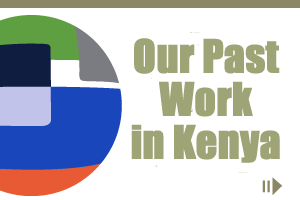By Trudy Mbaluku
The wall paint of the yet to be completed maternity block at Kariobangi North Health Centre maternity block is fresh and clean. The Constituency Development Fund sponsored maternity ward has two delivery rooms, a wash area and a ward with a bed capacity of seven.
Two 2,500-litter tanks lie at the front on the compound. Once complete, the tanks will be installed on the roof of the maternity. “Water supplied by the city council will be stored in the tanks for use at the maternity,” says Miss Hilda Muthoni the facility’s contactor. The ward will be handed over to the already existing health center which serves the community.
But Mr David Juma, a healthcare worker at the centre, is skeptical about the promises of running water as the city council water is hard to come by. Residents from around the area buy water from vendors and the health facility is not spared either.
The dry and rusty taps in the facility are an indication that there has been no running water for a long time.
Juma is also worried about staff shortages. He says they attend to more than 200 patients from the community daily, a number that often overwhelms the two clinicians and a pharmacist assigned to the health center.
“I hope there are proper arrangements to equip the maternity block and hire more staff, otherwise it will be just be another building with minimal service delivery,” says Mr Juma. He says a doctor is supposed to come in on Wednesdays but this is not always the case. Sometimes he skips for weeks. “I guess he is busy,” says Juma who declines to reveal his destination.
The maternity contractor Miss Hilda Muthoni says the maternity ought to have been completed by now but the funds were released only six months ago. She is hopeful her work will be done in two months time.
The Kariobangi case is not unique as this is the situation most CDF funded health facilities have fallen victim to poor planning.
By 2010, at least 100 hospitals had been constructed using CDF funding, according to the Service Provision Assessment (SPA) 2010 report. Many of the facilities grapple with staff shortages and lack of basic sanitation like soap and running water.
The report reveals that seven out of eight facilities in the country do not provide full sanitation in all treatment areas. Shockingly, soap and running water are among the rare commodities in health facilities.
In the first presidential debate candidate Musalia Mudavadi admitted to have witnessed a maternity facility in Lamu with no running water.
Such is the case at Uthiru Dispensary in Kiambu, which was allocated CDF funds to build a maternity ward. It has no adequate budget for sanitation supplies . “The number of patients are growing but supplies remain the same,” reveals the medical officer in charge of the dispensary. She says there is hardly enough gloves and sanitizers for the floors and toilets.
The country is set for more unplanned expansion of health facilities if politician’s words are anything to go by.
Most of the party manifestos promise free basic health care for the Kenyan poor, a promise medical expert say is virtually impossible to achieve within five years given the state of facilities around the country.
Commenting on the manifestos, Dr Patrick Akuku, one of the eight neurosurgeons in the country, says: “Promising free healthcare to all are just but ‘rosy’ words to woo the electorate adding that it is possible but progressively over a period of time.”
“You can have the money to build hospitals, health centers, dispensaries but where will the personnel come from?” he poses.




